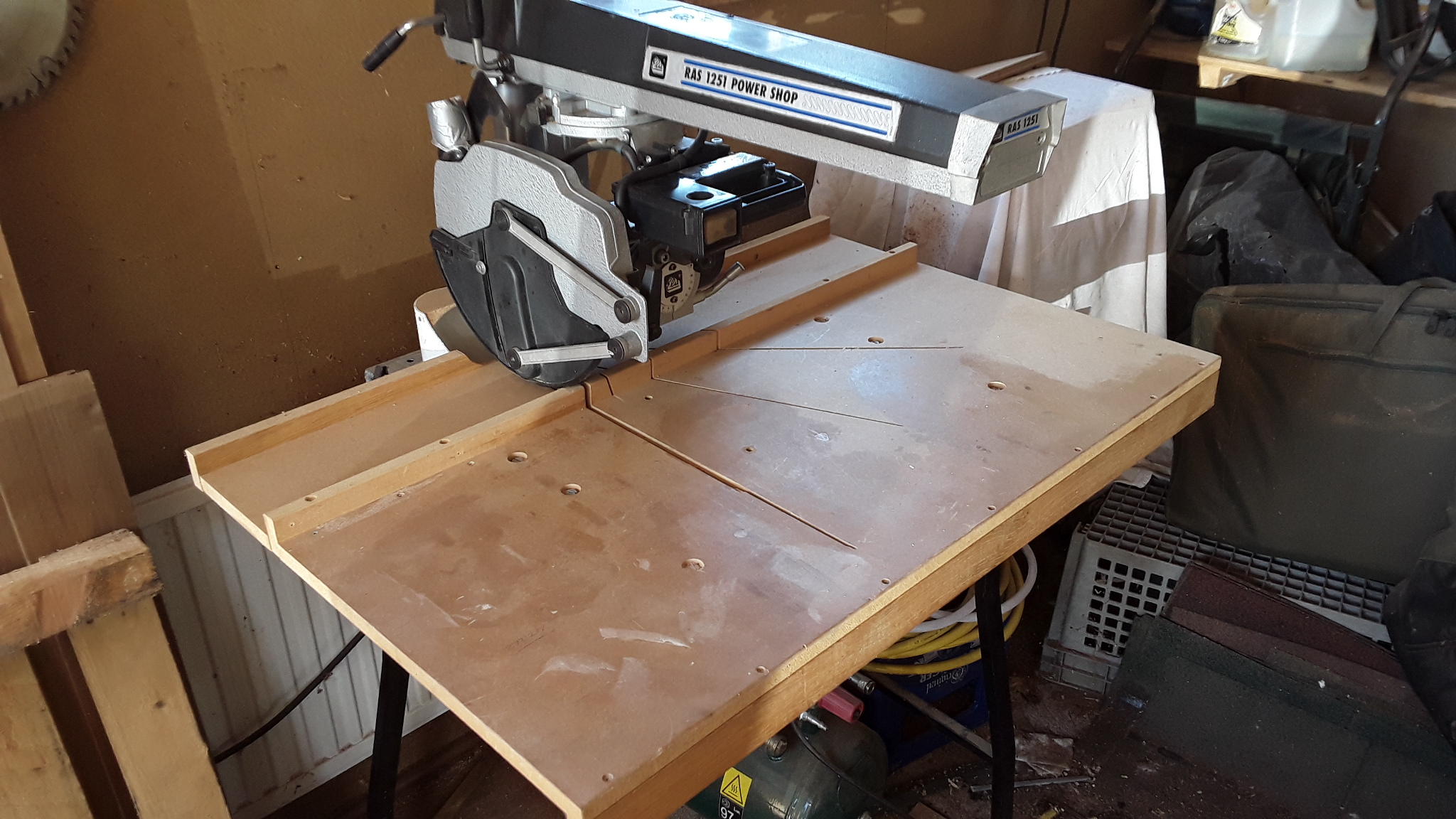I've been doing this myself today; making a Mr Sawdust version. The most important and useful information I found on the web is about setting the fence position. Everything follows from that.
Turn the saw so the blade is in the in-rip position, and adjust the yoke on the arm ,so the in-rip scale reads zero, then lock the yoke on the arm. The back face of the blade is then exactly where the front face of the fence should be. Everything else flows from that location of the fence front edge.
I chose a front table 1010x470, a fence of 20mm and two rear tables of 1010x50 and 1010x100mm. (1010mm wide because my metal bars were 1m each. and it gives me a little to clean up edges without fouling the inserts, and 470mm deep because that brings the table a few centimetres in front of the the side support brackets. Maximum cross-cut is 380mm so there is plenty of room, especially so because the fence would also be rearward 50mm. Maximum out-rip would be slightly forward of the table edge but that isn't a bad thing.
Finally an observation about MDF tops. MDF dust is a carcinogen. To use it on a saw top when you are young to middle-age is asking for trouble as every time you make a cut MDF dust will circulate. Far better to choose good quality birch ply which will remain dimensionally stable, unlike MDF






































